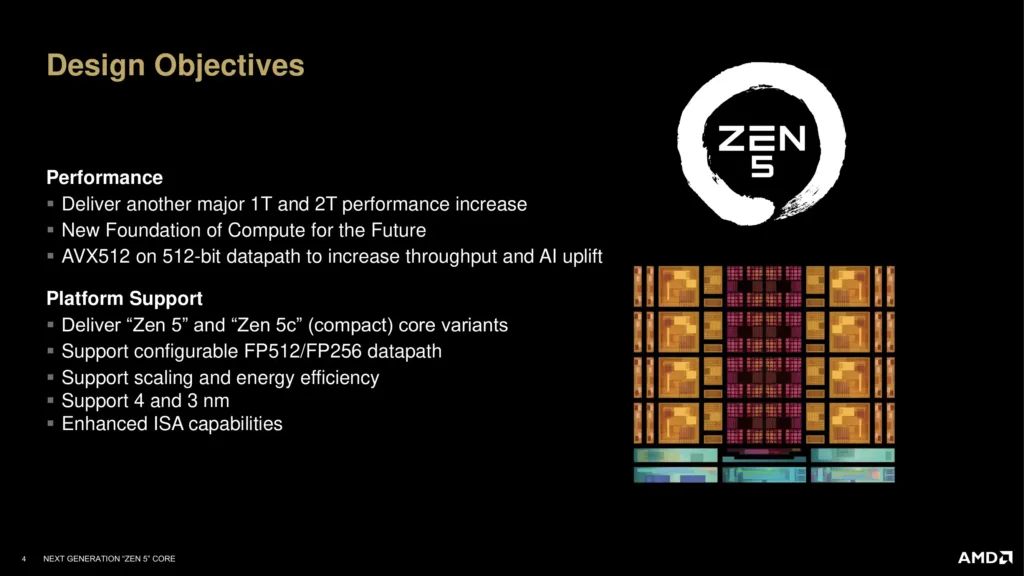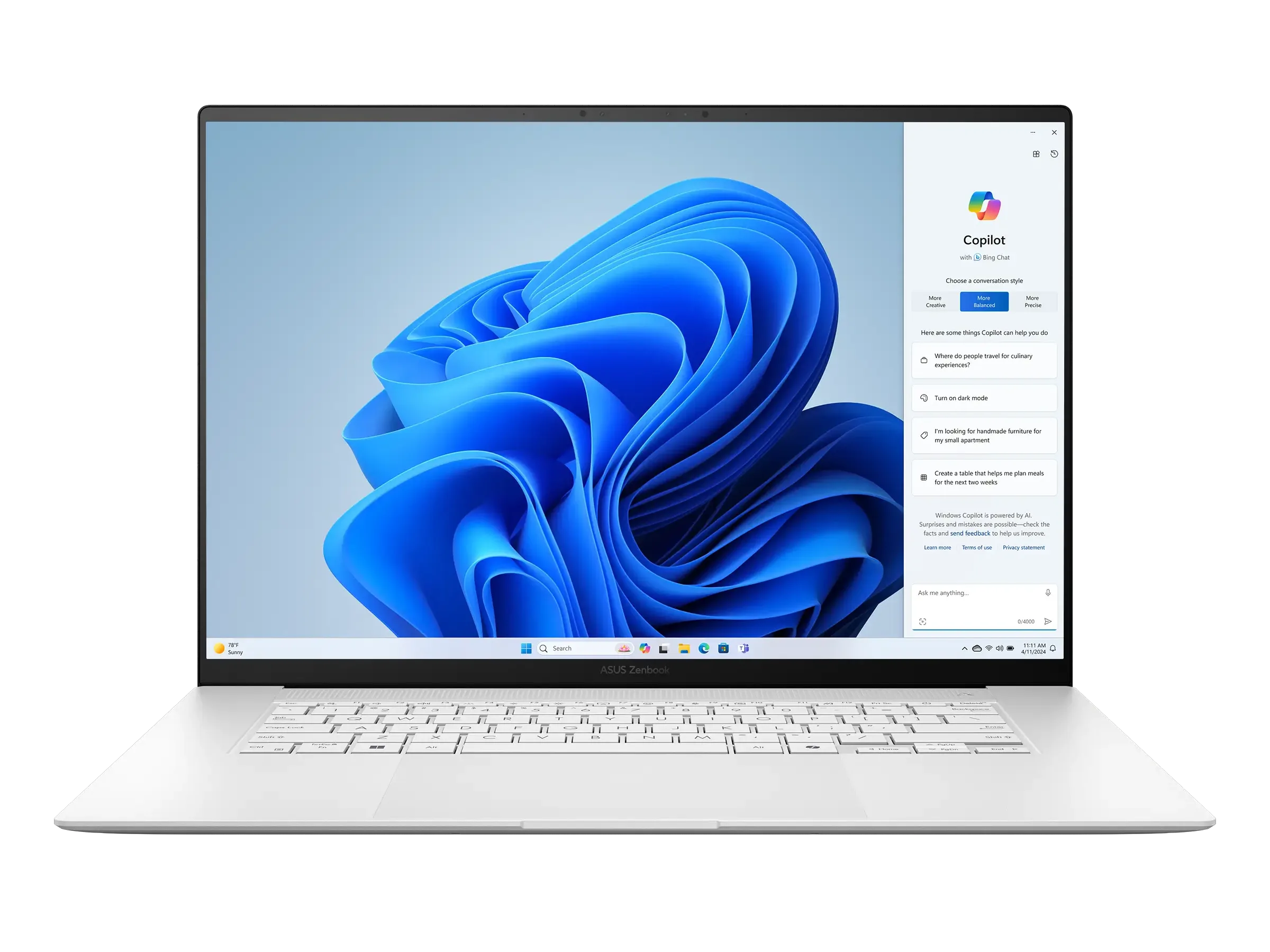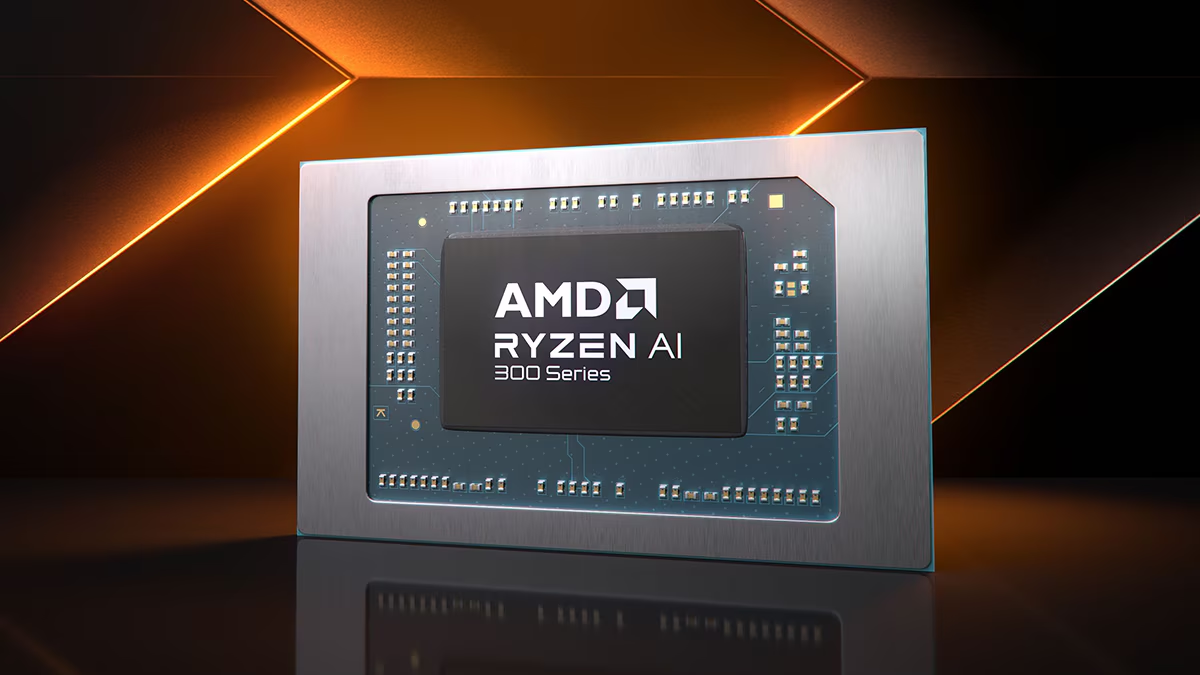During the Computex 2024, AMD unveiled the highly-anticipated Zen 5 architecture. AMD announced plans to bring Zen 5 to both mobile and desktop markets, with the launches of these platforms scheduled just weeks apart. However, the desktop launch is now delayed to the first two weeks of August.
The first laptop with Ryzen AI 300 series has been launched with the Asus Zenbook
S 16.
AMD Ryzen AI 300 series
The Ryzen AI 300 series includes three new SKUs: the already-announced Ryzen AI 9 HX 370 and Ryzen AI 9 365, along with the newly introduced Ryzen AI 9 HX 375 features faster NPU units.
The top SKU has 4 Zen 5 and 8 Zen 5c cores, and up to 16 RDNA 3.5 Compute Units. This architecture integrates more CPU and GPU cores alongside a significantly faster XDNA unit.
| Cores | Base Freq | Turbo Frequency | L3 Cache | Graphics | NPU | |
| Ryzen AI 9 HX 375 | 4 x Zen 5 8 x Zen 5c (24 Threads) | 2.0GHz | Zen5: 5.1GHz Zen 5c: 3.3GHz | 24 MB | Radeon 890M (16 CU) | XDNA 2 (55 TOPS) |
| Ryzen AI 9 HX 370 | 4x Zen 5 8x Zen5c (24 Threads) | 2.0GHz | Zen5: 5.1GHz Zen 5c: 3.3GHz | 24 MB | Radeon 890M (16 CU) | XDNA 2 (50 TOPS) |
| Ryzen AI 9 365 | 4x Zen 5 6x Zen5c (20 Threads) | 2.0GHz | Zen 5: 5.0GHz Zen 5c: 3.3 GHz | 24 MB | Radeon 880M (12 CU) | XDNA 2 (50 TOPS) |
AMD has moved away from differentiating its SKUs by TDP. Instead, laptop manufacturers can configure a single SKU to support power ranges from 15 to 54W.
While this change offers greater flexibility for the makers, it may also confuse customers trying to identify the official TDP. Just like discrete GPUs TDP, we can expect the laptop brands to not give out the information. (well, AMD is fine in this regard).
Each of the three SoCs combines regular Zen 5 cores with more compact Zen 5c cores within the CPU cluster, paired with powerful Radeon 890M/880M GPUs and an XDNA 2-based NPU. The chips also benefit from minor manufacturing improvements, utilizing TSMC’s N4P (4 nm) node for the Strix Point monodie.

Strix Point’s design includes two core complexes (CCXs): one with four Zen 5 cores and the other with eight Zen 5c cores. According to AMD, the Zen 5c cores are approximately 25% smaller than the regular Zen 5 cores, with varying levels of L3 cache.
AMD Ryzen AI 300 series Reviews (Asus Zenbook S16)

Initial tests on the ASUS Zenbook S16, which lacks a discrete GPU, show that RDNA 3.5 graphics deliver only a 12% performance increase over Hawk Point, despite having 50% more cores.
Reviews also indicate that battery life is comparable to Qualcomm’s Snapdragon X Series, known for its long battery life. The ASUS laptop, for instance, offers similar runtimes to Qualcomm-based systems, even with a smaller battery and screen.
AMD still faces challenges in providing an effective solution for the XDNA NPU, as there are not many use cases at the moment, a common issue among all Copilot+PC certified systems.
Here are some of the reviews:
- Anandtech – Read here
- KitGuru – Watch here
- Notebookcheck – Read here
- Hardware Canucks – Watch here
- PCMag – Read here
- Dave2D – Watch here
More laptops with the Ryzen AI 300 series will launch in the coming weeks with higher TDP. It will also be interesting to see MiniPCs and handheld consoles with these “Strix” APUs.

Leave a Reply
You must be logged in to post a comment.